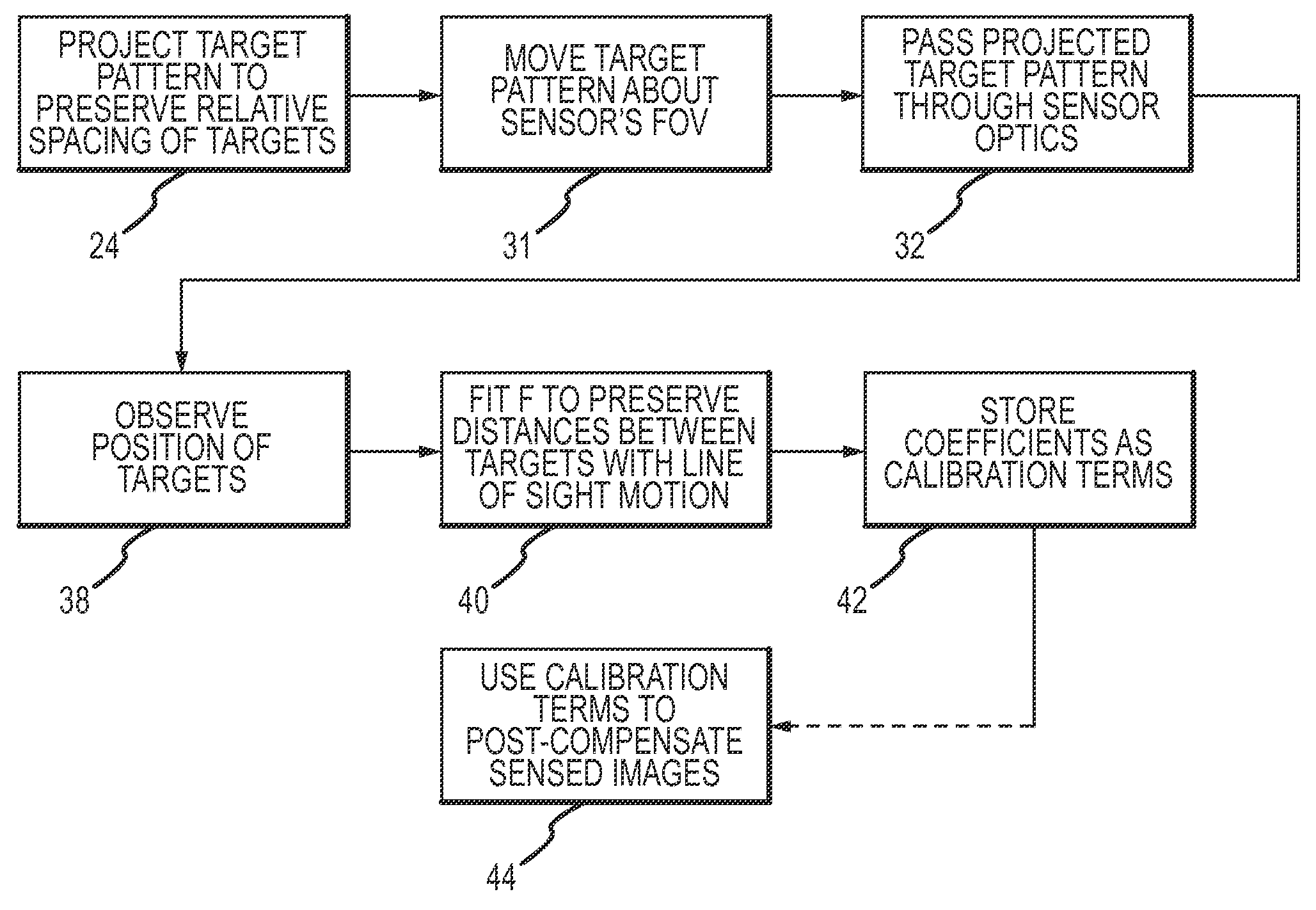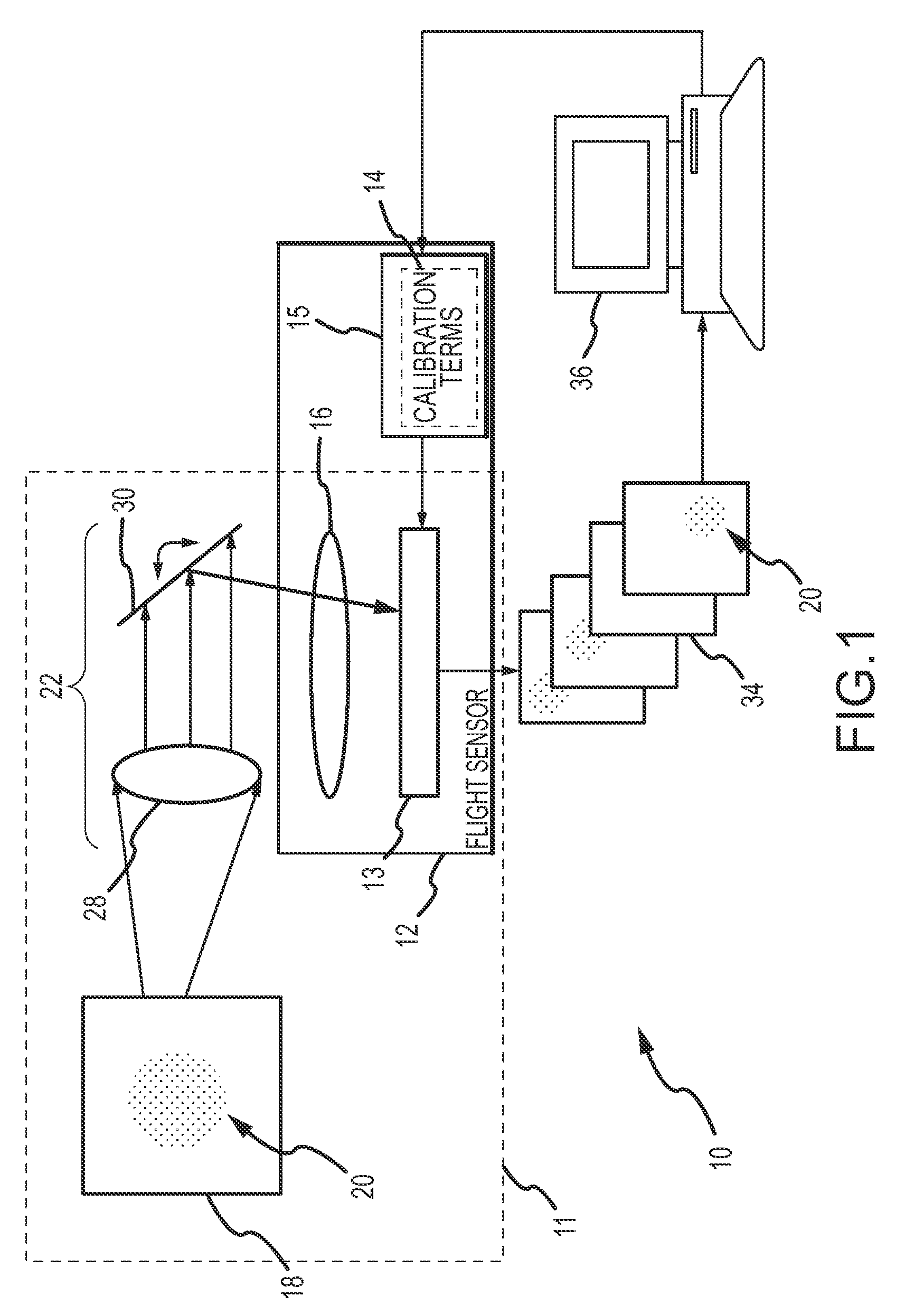Optical distortion calibration for electro-optical sensors
a technology of electrooptical sensors and calibration methods, applied in the direction of optical radiation measurement, instruments, television systems, etc., can solve the problems of impracticality of projecting precision collimated patterns, markedly more calibration, and all imaging systems have some amount of optical distortion attributable to their optics, so as to eliminate the calibration of the mirror controller and achieve efficient and accurate calibration
- Summary
- Abstract
- Description
- Claims
- Application Information
AI Technical Summary
Benefits of technology
Problems solved by technology
Method used
Image
Examples
Embodiment Construction
[0022]The present invention provides for performing optical distortion calibration for a flight sensor in a chamber that eliminates calibration of the mirror controller and allows for calibration while the target is in motion across the FOV thus providing a more efficient and accurate calibration.
[0023]An exemplary test setup 10 and calibration procedure are illustrated in FIGS. 1 and 2. A vacuum chamber 11 is provided with a flight sensor 12 including an EO sensor 13, calibration terms 14 stored in a tangible medium 15 and sensor optics 16. A target pattern 18 including a plurality of targets 20 is provided in the chamber. An optical system 22 projects the target pattern so that the pattern may be shifted in a field-of-view (FOV) measured by the sensor while preserving the relative positions of the targets. Optical system 22 is suitably configured with a collimating lens 28 that first projects the target pattern into collimated space so that the angular difference position from eac...
PUM
 Login to View More
Login to View More Abstract
Description
Claims
Application Information
 Login to View More
Login to View More - R&D
- Intellectual Property
- Life Sciences
- Materials
- Tech Scout
- Unparalleled Data Quality
- Higher Quality Content
- 60% Fewer Hallucinations
Browse by: Latest US Patents, China's latest patents, Technical Efficacy Thesaurus, Application Domain, Technology Topic, Popular Technical Reports.
© 2025 PatSnap. All rights reserved.Legal|Privacy policy|Modern Slavery Act Transparency Statement|Sitemap|About US| Contact US: help@patsnap.com



